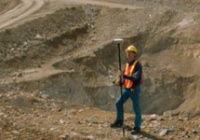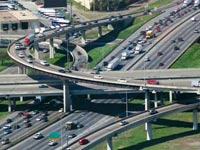If you wish to contribute or participate in the discussions about articles you are invited to contact the Editor
GLONASS User Segment: Difference between revisions
Jorge.Moran (talk | contribs) (Created page with "{{Article Infobox2 |Category=GLONASS |Title={{PAGENAME}} |Authors=GMV |Level=Basic |YearOfPublication=2011 |Logo=GMV }} The GPS User Segment consists on L-band radio receiver/pro...") |
mNo edit summary |
||
| (48 intermediate revisions by 8 users not shown) | |||
| Line 1: | Line 1: | ||
{{Article Infobox2 | {{Article Infobox2 | ||
|Category=GLONASS | |Category=GLONASS | ||
| | |Editors=GMV | ||
|Level=Basic | |Level=Basic | ||
|YearOfPublication=2011 | |YearOfPublication=2011 | ||
|Logo=GMV | |Logo=GMV | ||
|Title={{PAGENAME}} | |||
}} | }} | ||
The | The GLONASS User Segment consists on L-band radio receiver/processors and antennas which receive GLONASS signals, determine pseudoranges (and other observables), and [[An intuitive approach to the GNSS positioning|solve the navigation equations]] in order to obtain their coordinates and provide a very accurate time. | ||
== | ==GLONASS Receivers== | ||
A [[ | A [[GLONASS Receivers|GLONASS Receiver]] is a device capable of determining the user position, velocity and precise time (PVT) by processing the signal broadcasted by satellites. | ||
Any navigation solution provided by a [[ | Any navigation solution provided by a [[GNSS Receivers General Introduction|GNSS Receiver]] is based on the computation of its distance to a set of satellites, by means of extracting the propagation time of the incoming signals traveling through space at the speed of light, according to the satellite and receiver local clocks. | ||
Notice that satellites are always in motion, so previous to obtaining the navigation message, the satellite’s signal is detected and tracked. The receiver’s functional blocks that perform these tasks are the antenna, the front-end and the baseband signal processing (in charge of acquiring and tracking the signal). | Notice that satellites are always in motion, so previous to obtaining the navigation message, the satellite’s signal is detected and tracked. The receiver’s functional blocks that perform these tasks are the antenna, the front-end and the baseband signal processing (in charge of acquiring and tracking the signal). | ||
| Line 22: | Line 21: | ||
* Time parameters and Clock Corrections, to compute satellite clock offsets and time conversions | * Time parameters and Clock Corrections, to compute satellite clock offsets and time conversions | ||
* Service Parameters with satellite health information | * Service Parameters with satellite health information | ||
* Almanacs, needed for the acquisition of the signal by the receiver. It allows computing the position of all satellites but with a lower accuracy than the ephemeris | * Almanacs, needed for the acquisition of the signal by the receiver. It allows computing the position of all satellites but with a lower accuracy than the ephemeris | ||
The ephemeris and clocks parameters are usually updated every | The ephemeris and clocks parameters are usually updated every half-an-hour, whereas the almanac is updated at least every six days. | ||
For more information, please refer to GLONASS Interface Control Document <ref name="ICD-GLONASS-eng">[http://rniikp.ru/en/pages/about/publ/ICD_GLONASS_eng.pdf GLONASS Interface Control Document, Edition 5.1]</ref> which specifies parameters of interface between GLONASS space segment and user equipment in L1 and L2 Bands | |||
==Commercial use== | |||
Although the GLONASS constellation is nearing global coverage, its commercialization, especially development of the user segment, has been lacking compared to the U.S. GPS system.<ref name="GLONASS_Wikipedia">[http://en.wikipedia.org/wiki/GLONASS GLONASS on Wikipedia]</ref> | |||
In addition to | |||
To improve the situation, the Russian government has been actively promoting GLONASS for civilian use. In 2001, the government announced that all passenger cars, large transport vehicles and vehicles transporting dangerous materials were required to use GLONASS-equipped navigators.<ref name=RUSSIA_ACEL>[http://asmmag.com/2012-12-30-14-40-18/feature/1472-russia-accelerates-glonass-navigation-satellite-launches.html Russia Accelerates GLONASS Navigation Satellite Launches]</ref> The tracking of this road traffic will be tied to road tax collection as well as to a roadside assistance in the event of an accident.<ref name=RUSSIA_ACEL/> | |||
In addition, the government has been pushing for all car manufacturers in Russia to make cars with GLONASS since 2011. This affects all car makers, including foreign brands like Ford and Toyota, which have car assembling facilities in Russia.<ref name="GLONASS_Wikipedia"/> | |||
Commercial response to GLONASS improved accuracy las lead to several recent announcements that include: | |||
* Qualcomm has announced the first GLONASS capable phone (MTS 945 from ZTE): "ZTE is first to market with a smartphone that supports both the GPS and GLONASS satellite systems, taking full advantage of the functionality which has been integrated into our Snapdragon MSM7x30 chipset and software”.<ref>[http://www.glonass-center.ru/en/content/news/?ELEMENT_ID=116 Qualcomm Incorporated now has product support for the Russian GLONASS satellite system]></ref> | |||
*On February 2, ST-Ericsson launched “the world’s smallest receiver” to connect to both GPS and GLONASS satellites.<ref>[http://gpsworld.com/ ST-Ericsson Launches GPS + GLONASS Receiver]</ref> | |||
* Broadcom Corporation, a global leader in semiconductors for wired and wireless communications, announced two new GPS system-on-a-chip solutions that include support for the GLONASS Russian Navigation Satellite System.<ref>[http://www.broadcom.com/press/release.php?id=s548713 Broadcom announces two new system-on-a-chip solutions with support for GLONASS]</ref> | |||
*In April 2011, Sweden’s Swepos became the first foreign company to use Russia’s GLONASS positioning technology, due to Swepos’ conviction that it is better than GPS at northern latitudes.<ref>[http://www.ewdn.com/2011/04/12/swedish-satellite-data-provider-prefers-glonass-to-gps/ Swedish satellite data provider prefers GLONASS to GPS]</ref> | |||
==Applications== | ==Applications== | ||
[[GNSS Applications | [[File:app_survey.jpg|200px|thumb|right]] | ||
[[File:app_transport.png|250px|thumb|right]] | |||
* | [[GNSS Applications|GLONASS applications]] are all those applications that use GLONASS to collect position, velocity and time information to be used by the application. | ||
* | Global navigation and time synchronization service of unlimited number of users on ground, on sea, airborne and in space:<ref>[http://www.spacecorp.ru/en/directions/glonass/function/ GLONASS Applications on spacecorp.ru]</ref> | ||
* | * Armed Forces | ||
* | * Communication and energy systems synchronization | ||
* | * Geodesy: GLONASS and GLONASS\GPS receivers are used to determine precise coordinates of points and land parcel boundaries | ||
* Cartography: GLONASS is used in civilian and military cartography | |||
* Tectonics: tectonic plates movements and convulsions are tracked using satellites | |||
* Navigation: global positioning systems are used for maritime and roadway navigation | |||
* Satellite monitoring: ERA-GLONASS project is motor vehicle position and velocity monitoring and control over their movements | |||
* Complex engineering structures monitoring | |||
* Animals monitoring, environmental protection | |||
* Search and rescue facilitation | |||
* Personal trackers, "panic button" | |||
==Notes== | ==Notes== | ||
| Line 55: | Line 61: | ||
<references/> | <references/> | ||
[[Category:GLONASS | [[Category:GLONASS]] | ||
Latest revision as of 16:27, 29 June 2018
| GLONASS | |
|---|---|
| Title | GLONASS User Segment |
| Edited by | GMV |
| Level | Basic |
| Year of Publication | 2011 |
The GLONASS User Segment consists on L-band radio receiver/processors and antennas which receive GLONASS signals, determine pseudoranges (and other observables), and solve the navigation equations in order to obtain their coordinates and provide a very accurate time.
GLONASS Receivers
A GLONASS Receiver is a device capable of determining the user position, velocity and precise time (PVT) by processing the signal broadcasted by satellites.
Any navigation solution provided by a GNSS Receiver is based on the computation of its distance to a set of satellites, by means of extracting the propagation time of the incoming signals traveling through space at the speed of light, according to the satellite and receiver local clocks.
Notice that satellites are always in motion, so previous to obtaining the navigation message, the satellite’s signal is detected and tracked. The receiver’s functional blocks that perform these tasks are the antenna, the front-end and the baseband signal processing (in charge of acquiring and tracking the signal).
Once the signal is acquired and tracked, the receiver application decodes the navigation message and estimates the user position. The Navigation Message includes:[1]
- Ephemeris parameters, needed to compute the satellite’s coordinates
- Time parameters and Clock Corrections, to compute satellite clock offsets and time conversions
- Service Parameters with satellite health information
- Almanacs, needed for the acquisition of the signal by the receiver. It allows computing the position of all satellites but with a lower accuracy than the ephemeris
The ephemeris and clocks parameters are usually updated every half-an-hour, whereas the almanac is updated at least every six days.
For more information, please refer to GLONASS Interface Control Document [2] which specifies parameters of interface between GLONASS space segment and user equipment in L1 and L2 Bands
Commercial use
Although the GLONASS constellation is nearing global coverage, its commercialization, especially development of the user segment, has been lacking compared to the U.S. GPS system.[3]
To improve the situation, the Russian government has been actively promoting GLONASS for civilian use. In 2001, the government announced that all passenger cars, large transport vehicles and vehicles transporting dangerous materials were required to use GLONASS-equipped navigators.[4] The tracking of this road traffic will be tied to road tax collection as well as to a roadside assistance in the event of an accident.[4] In addition, the government has been pushing for all car manufacturers in Russia to make cars with GLONASS since 2011. This affects all car makers, including foreign brands like Ford and Toyota, which have car assembling facilities in Russia.[3]
Commercial response to GLONASS improved accuracy las lead to several recent announcements that include:
- Qualcomm has announced the first GLONASS capable phone (MTS 945 from ZTE): "ZTE is first to market with a smartphone that supports both the GPS and GLONASS satellite systems, taking full advantage of the functionality which has been integrated into our Snapdragon MSM7x30 chipset and software”.[5]
- On February 2, ST-Ericsson launched “the world’s smallest receiver” to connect to both GPS and GLONASS satellites.[6]
- Broadcom Corporation, a global leader in semiconductors for wired and wireless communications, announced two new GPS system-on-a-chip solutions that include support for the GLONASS Russian Navigation Satellite System.[7]
- In April 2011, Sweden’s Swepos became the first foreign company to use Russia’s GLONASS positioning technology, due to Swepos’ conviction that it is better than GPS at northern latitudes.[8]
Applications
GLONASS applications are all those applications that use GLONASS to collect position, velocity and time information to be used by the application. Global navigation and time synchronization service of unlimited number of users on ground, on sea, airborne and in space:[9]
- Armed Forces
- Communication and energy systems synchronization
- Geodesy: GLONASS and GLONASS\GPS receivers are used to determine precise coordinates of points and land parcel boundaries
- Cartography: GLONASS is used in civilian and military cartography
- Tectonics: tectonic plates movements and convulsions are tracked using satellites
- Navigation: global positioning systems are used for maritime and roadway navigation
- Satellite monitoring: ERA-GLONASS project is motor vehicle position and velocity monitoring and control over their movements
- Complex engineering structures monitoring
- Animals monitoring, environmental protection
- Search and rescue facilitation
- Personal trackers, "panic button"
Notes
References
- ^ J. Sanz Subirana, JM. Juan Zornoza and M. Hernández-Pajares, Global Navigation Satellite Systems: Volume I: Fundamentals and Algorithms
- ^ GLONASS Interface Control Document, Edition 5.1
- ^ a b GLONASS on Wikipedia
- ^ a b Russia Accelerates GLONASS Navigation Satellite Launches
- ^ Qualcomm Incorporated now has product support for the Russian GLONASS satellite system>
- ^ ST-Ericsson Launches GPS + GLONASS Receiver
- ^ Broadcom announces two new system-on-a-chip solutions with support for GLONASS
- ^ Swedish satellite data provider prefers GLONASS to GPS
- ^ GLONASS Applications on spacecorp.ru


